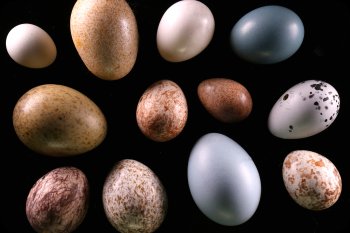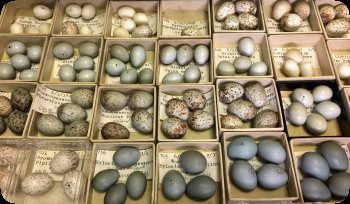The Study of Oology
In the 1800s and early 1900s, before federal protections for all birds were established, egg collecting thrived as a hobby. Collectors bought, sold, and traded eggs with one another. In 1918, the Migratory Bird Treaty Act was established to stop the commercialization of birds, primarily because market hunting for restaurants and to provide feathers for the hat trade was decimating populations. As egg collecting slowly disappeared in the years following, many collectors gave their collections to museums.
The Illinois State Museum has been the beneficiary of this, receiving collections that are now irreplaceable. Many of the thousands of eggs in the ISM collection are well over 100 years old. Egg collections such as these serve a valuable purpose. For example, historic egg collections held by museums were used to demonstrate eggshell thinning caused by use of the pesticide DDT. This ultimately led to a ban on the use of DDT in the United States to protect bird populations that were declining.
The study of eggs is known as oology. Not only do the eggs have scientific value, they have aesthetic value as well. Looking closely, it is apparent that many eggs are small works of art. To learn more, follow the link to this video about the ISM’s collection of bird eggs.







